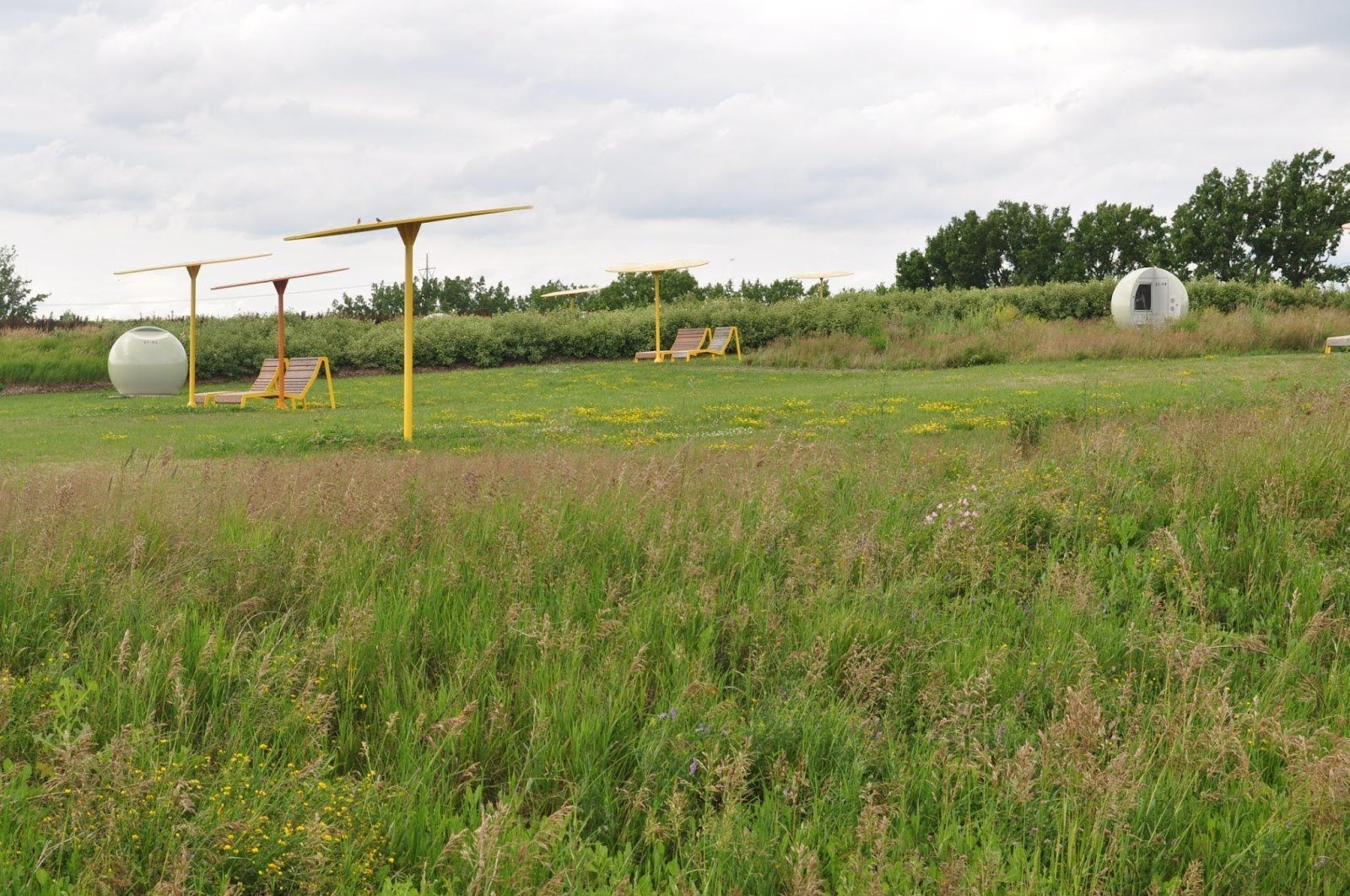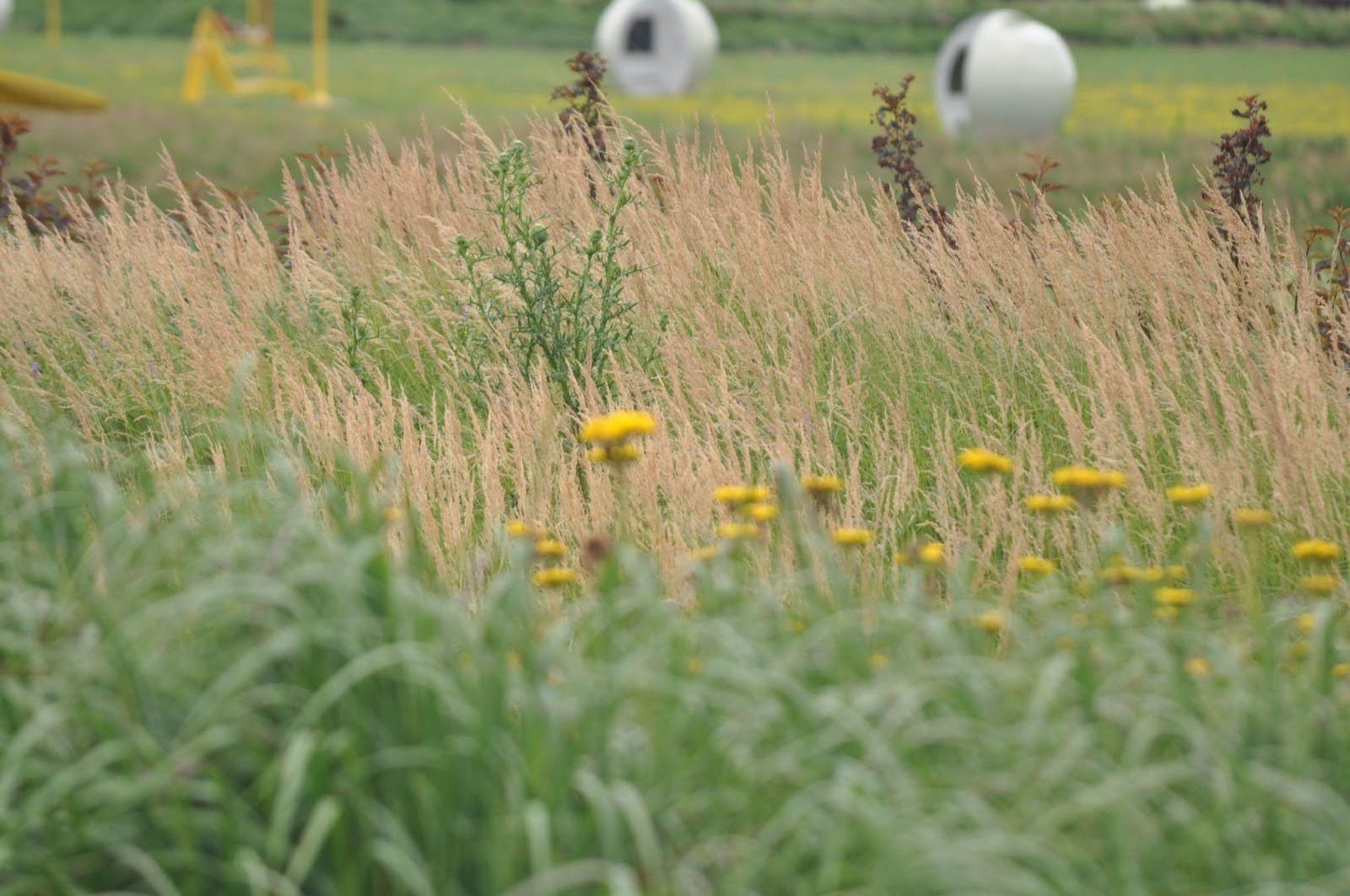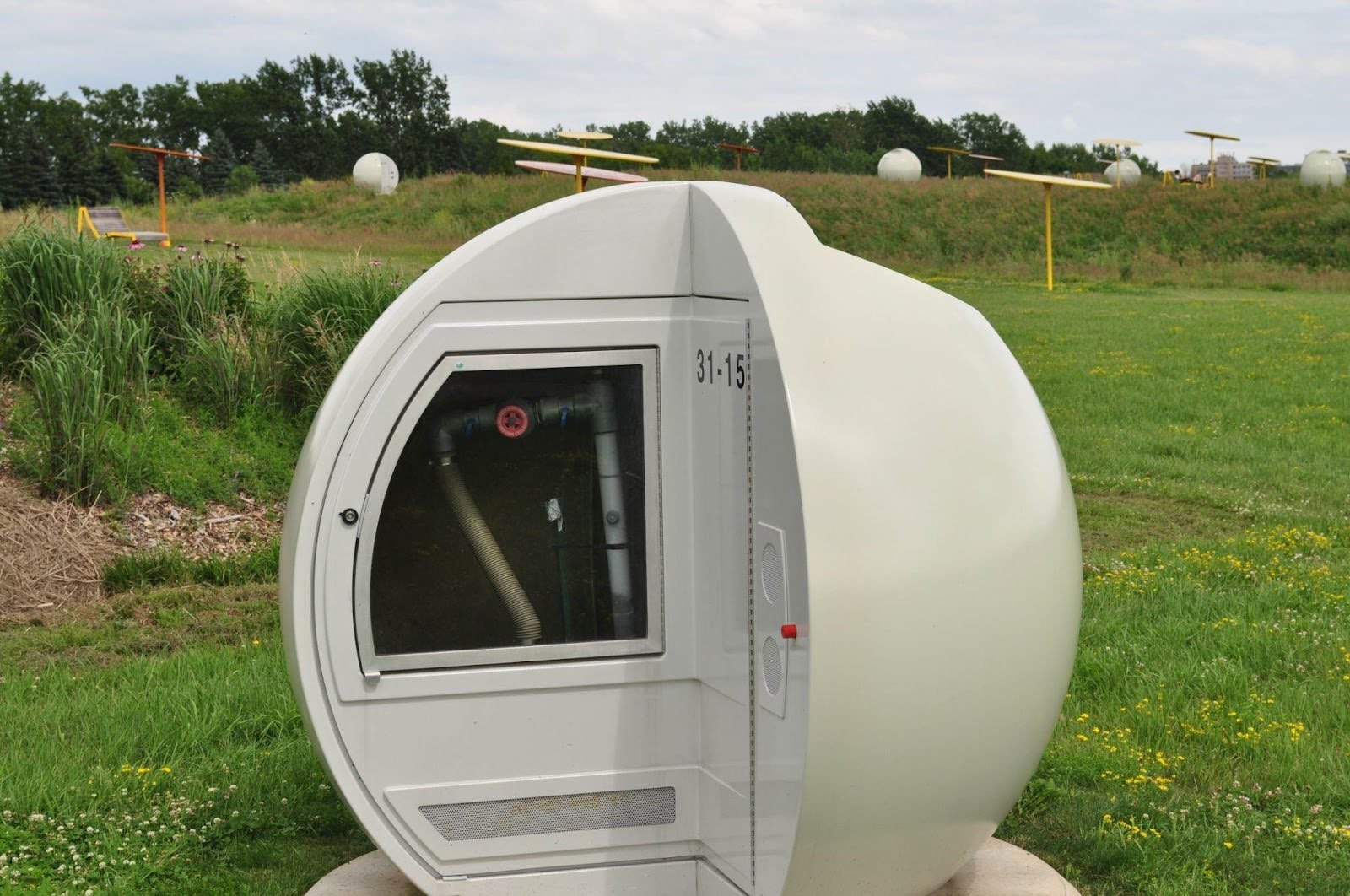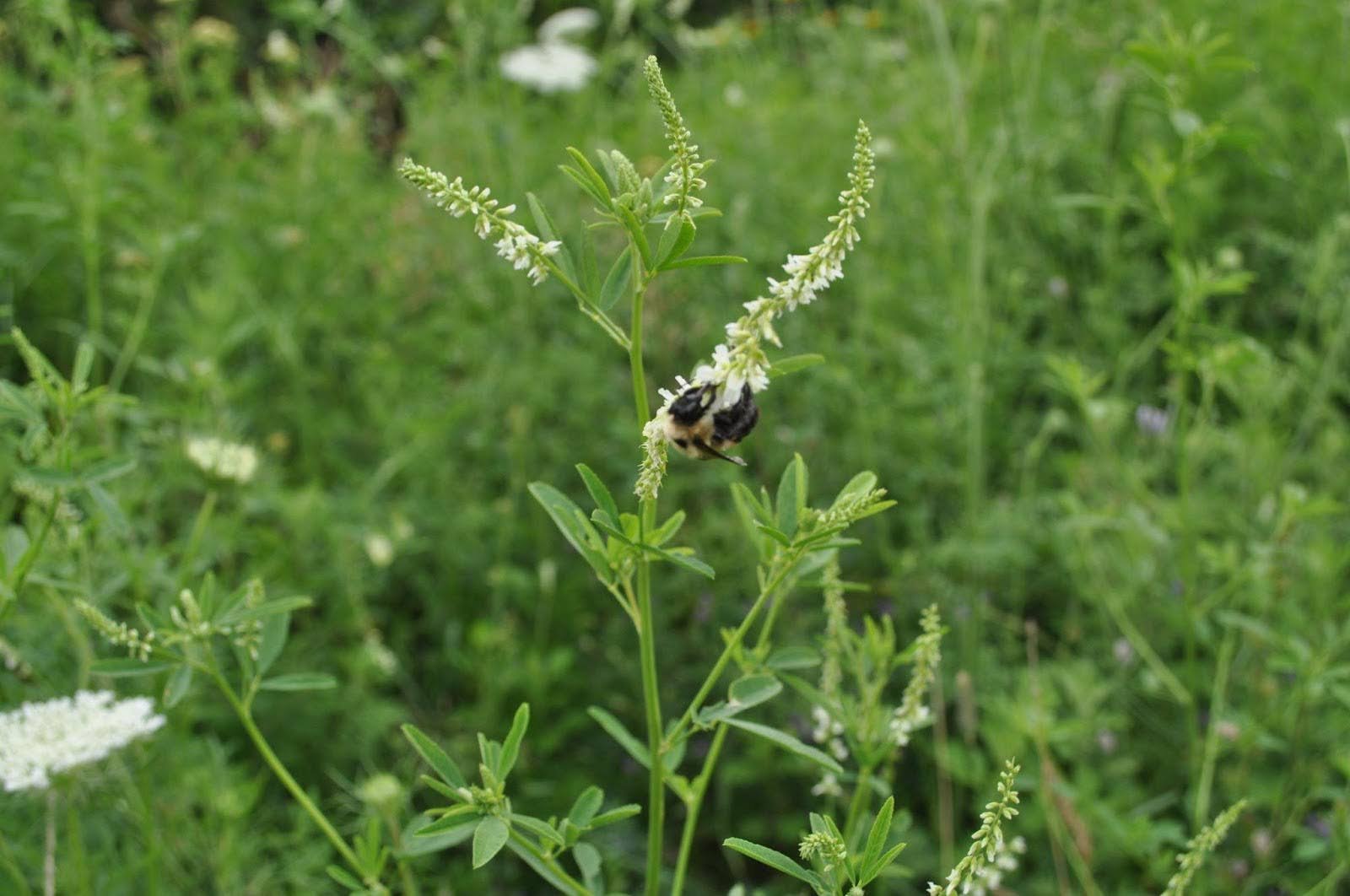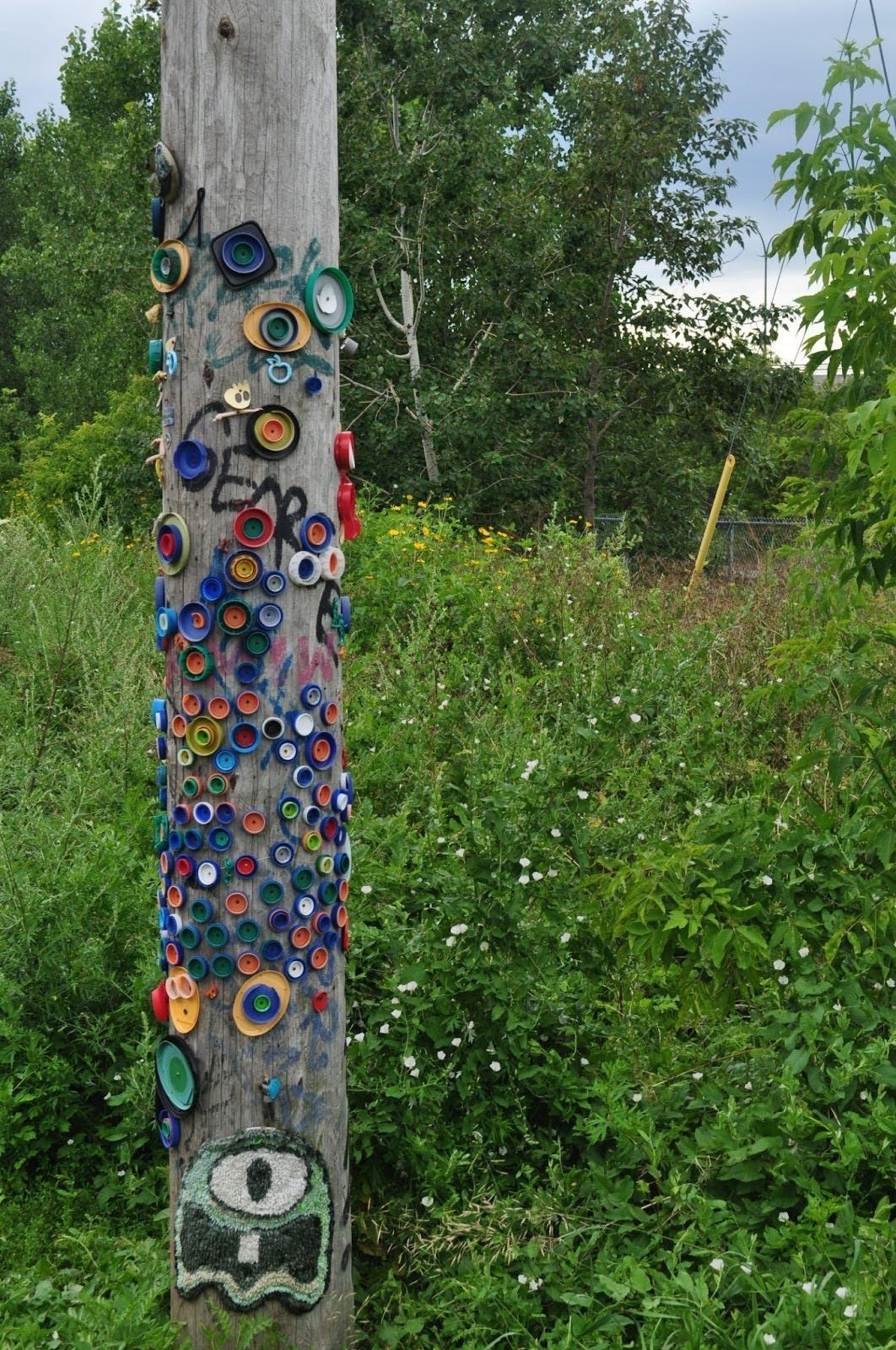From Garbage to Herbage: Thinking Outside the Box to Make our Cities Greener, Examples from Montreal.
by Majdi Hunter-Batal
What comes to mind when you think of an urban green space? A park bench, an oak tree, a gravel path and a fountain? A luscious green lawn to toss a frisbee around and a playground? An emblematic park in a zone unfit for development (coastal or mountainous area)?
While these scenes are common in many cities, they are not the only type of greenspace possible. In fact, urban greenspaces serve diverse functions and to maximize them, they must appear in diverse forms going beyond traditional parks.
Functionally, urban greenspaces are ecological havens preserving a wide range of taxa across a heavily constructed landscape, while providing psychological, social, cultural, physical, and recreational benefits to the surrounding population. Plus, exposing humans to nature increases their desire to protect nature, forming a virtuous circle. Amidst a global biodiversity crisis and with citizens developing a greater appreciation for nature - especially after many lockdowns in the past few years - the pressure is on for cities to expand their greenspaces.
Simply having spaces that are, by chance, spared from development as de facto greenspaces is no longer sufficient to supply the growing demand. To maintain and expand urban nature, cities must actively fight development in ecologically valuable areas and think outside the box to create new greenspaces wherever possible.
In the past year, I have been working in the Gonzalez lab on urban greenspaces of Montreal, looking at how different styles of management and planning influence greenspaces and their biodiversity. My research was heavily inspired by the idea of urban tinkering (Elmqvist et al. 2018) which stems from the idea of evolutionary tinkering first proposed by the evolutionary biologist François Jacob. Elmqvst et al. define urban tinkering as “a mode of operation, encompassing policy, planning and management processes, that seeks to transform the use of existing and design of new urban systems in ways that diversify their functions, anticipate new uses and enhance adaptability, to better meet the social, economic and ecological needs of cities under conditions of deep uncertainty about the future.” Therefore, urban tinkering promotes flexible, transdisciplinary, grassroots, and adaptable design of green and blue space. With this idea in mind, I set out to assess whether there was evidence for urban tinkering in the greenspaces of Montreal.
This research project gave me the chance to visit many of Montreal’s greenspaces, and I met some key actors involved in planning and managing these parks. Through this enriching experience, I have gotten to know some of the less conventional greenspaces in more depth. In the next few paragraphs, I will share with you some of Montreal’s “success stories” of alternative urbanism.
Parc Frédérick-Back
From quarry to dump to field, this imposing park, north-east of downtown (non-Montrealers would call it north), is in constant expansion and is expected to cover 153 ha when the renaturalisation process is complete. Given its history as a mine starting in the 19th century and as a resting place for Montrealers’ garbage as of the late 60s, transforming this area into a luscious park has required some engineering and design feats. All over the park, small round pods cover some 200 wells that capture methane and other noxious substances released by the decomposing garbage. The spherical shape of these covers allows them to always look upright despite the unstable ground that has subsided by more than 10 cm a year in some areas. This instability causes many challenges for park designers who cannot plant trees in most parts of the park where they are at risk of falling.
Rather than discouraging planners and designers, these challenges fostered an award-winning design and a biologically rich landscape dominated by grasses and herbaceous plants that are buzzing with life. Although the original transformation of the dump into a park required a lot of citizen involvement, the management is now mostly done by the city in collaboration with the TOHU circus that organizes cultural activities of all types. The park falls within the complexe environnemental de Saint-Michel (CESM) that contains a recycling plant, as well as an energy plant that uses the methane collected from the park. Scarred by its past, the park uses its position within the complex to raise awareness on key urban issues, like waste management. CESM continues to receive some solid waste which is being recycled and turned into benches out of cut down ash trees and gravel paths made of building residues.
Le Champs des Possibles
This small 1.4 ha piece of land in the dense and hip Mile-End neighborhood was used until the 1980s by the Canadian National (CN) rail company to store materials. After CN ceased its activities on the site, nature slowly took over. When development projects came knocking on the door, citizens, who had already started caring and enjoying the greener and rewilded space, demanded this unique greenspace be preserved. The space’s status as a park was eventually officialised, but it has kept its uniqueness, being co-managed by the city of Montreal and a citizen group called “Les Amis du Champ des Possibles”. The remarkable trait of the Champ is that it makes itself seem much bigger than it actually is. The high grasses and plants growing with naturally high density and overflowing onto crisscrossing sinuous paths can make you feel like you are in remote nature, despite never being more than a few meters away from the built-up city. Furthermore, its position along the seldom used freight train line makes it an ideal resting spot for larger animals like foxes and rabbits crossing the city.
This unique and charismatic space encourages artistic creation, alternative uses, and citizen involvement. It hosts the organization called “Le Lion et la Souris” that encourages free play in nature for kids and hosts many informal displays of art. However, the citizen-led approach also comes with challenges when trying to balance competing interests, like having bonfires and protecting nature, and they are solved by following democratic principles wherever possible. In fact, it is often hard for everyone’s voice to be heard in an equitable manner, especially when people are occupied by their work, study, and/or personal life.
Sentier Urbain
The NGO working in the dense and working-class neighborhoods of Ville Marie and Hochelaga Maisonneuve (just east of downtown) has clear goals: greening, educating, and engaging. For its team of dedicated and pragmatic employees and volunteers, no parcel is too small to vegetate, and no one is too marginalized to include. Sentier Urbain leads a handful of greenspace projects around the same neighborhood that incorporate cultural programing, promoting the human-nature link, and encouraging social cohesion.
In fact, one employee told me that offering more greenspaces and urban agriculture is the “tool” they chose to help with the social issues they care most about such as homelessness, food insecurity, and mental health. I visited one such project that combines a micro-forest and an urban vegetable garden. Within the small forest, information panels educate visitors on flora, fauna, and sustainable energy sources, while the garden in elevated planters is made more accessible for people with reduced mobility and avoids the contact of crops with the soil that is contaminated due to former uses.
The spaces Sentier Urbain uses are mostly loaned to them with a likely expiration date. The rapidly changing urban landscape poses many challenges, but the flexible structure of this NGO allows them to keep up with the rhythm of building and demolition of buildings. They can tailor their offers to the specific needs and timelines of a space, and have contacts with different organizations and companies to put their plans into action (for example through corporate volunteering). This allows them to continuously create new greenspaces and offer all their concomitant benefits to the underserved population of Ville-Marie and Hochelaga Maisonneuve.
Technoparc Oiseaux
The projects I have shown so far are great examples of repurposing developed land into greenspaces, but this process comes with its fair share of problems, including contaminated soils and fragmented land. Nature cannot be reproduced overnight, and transformed greenspaces are no replacement for mature ecosystems. The Technoparc Oiseaux knows this better than anyone else. The arrival at the inconspicuous entrance of the park tells you everything you need to know about its current situation. Nothing says “welcome to this highly contested greenspace” quite like a “LAND FOR DEVELOPMENT” sign, a huge trailer, and a bunch of construction materials.
This birder's favorite patch of nature next to Montreal’s Dorval airport does not have an official status, but combined with the adjacent golf course, it covers an area similar to that of the Mont-Royal Park. This huge swath of land subject to less intensive use than most similarly sized parks allows many, sometimes even endangered, species to thrive. Unlike other greenspaces in Montreal, the Technoparc is solely managed by volunteers who squeeze in the time to manage, upkeep, and protect this natural haven into their busy schedules.
In recent years, this space has suffered from tunneling activities to construct the REM (Montreal’s new light rail project), to the construction of a road that fragments the land in two, as well as the mowing of ecologically valuable fields by the Dorval airport. Recently, Hypertec, a tech company that offers sustainable solutions for data storage, bought an important part of the Technoparc with plans to build on it. Conservation efforts are ongoing, and only time will tell how this David and Goliath story will end.
Conclusion
The importance of greenspaces in our cities is no longer up for debate. Thankfully, great people around Montreal (and other cities!) understand their importance and are ready to go to great lengths to increase the access to greenspaces for all. People are fighting for every square inch of greenspace, and in the mode of urban tinkering, they are transforming old dumps into parks, piecing together patchworks of small spaces, and squatting temporary areas in hopes of making them permanent one day.
And yet, the perception that greenspaces are a waste of productive and buildable space is still far too prevalent. Although other land uses, such as homes and industries, are of course important, cities must redouble efforts to build densely and efficiently to allow space for nature. After all, greenspaces are Montreal’s pride and joy, and they are what makes it one of the most livable cities in the world.
Last year, during COP15 on Biodiversity in Montreal, the city agreed to ambitious targets for biodiversity conservation and placed itself as a world leader in the global city movement to protect nature. While the city has already shown its leadership towards biodiversity conservation on a local scale, with projects like the Parc Frédéric-Back, it must continue to be ambitious and protect as much ecologically and socially valuable land as possible, while anticipating its new uses and possibilities in the future.
Google Earth, 2023
To conclude: spot the waste of space!
Is it the ecologically valuable forest that hosts many species, absorbs carbon, and reduces heat islands, or the huge practically empty parking lots that are expensive to maintain, pollute, increase heat, and cater to an unsustainable mode of transport from the past? Let me know your thoughts in the comments!



